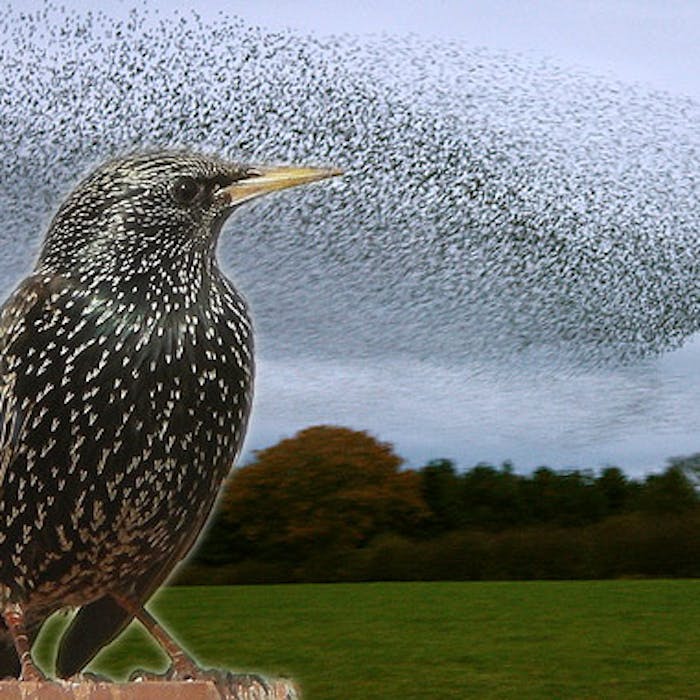
The Common Starling - aerobatic superstar of the sunset sky
The starling is a familiar bird visitor to gardens around Britain, notable for the beautiful purple-and-green sheen to its black feathers. It is also famous for its wintry aerial displays with massive flocks of sterlings to be seen wheeling in apparently co-ordinate aerobatics over both built-up areas and farmland.
Smaller than blackbirds, with a short tail, pointed head, and triangular wings, starlings look black at a distance, but when seen closer they are very glossy with a sheen of purples and greens. In the winter, their plumage is covered in tiny beige speckles. They eat invertebrates and fruit.
The starling's flight is fast and direct and they walk and run confidently on the ground too. They are well-known as noisy and gregarious birds. Their songs of high-pitched warbles, squeaks and clicks can often be heard from rooftops and electricity pylons.
The bird is native to Britain, and the majority of starlings in the UK are resident birds. They are joined by migrants from northern Europe in September and October. These return home during February and March, after wintering in Britain.
Starlings are particularly talented singers and mimics, and they have been known to emulate telephones and car alarms. Mozart had a pet starling which could sing part of his Piano Concerto in G Major. However, the characteristic for which the species is best known is for their spectacular aerial displays, in huge flocks, at sunset. These are described as murmurations.
Starlings often roost in large flocks on buildings, in trees, and on man-made structures such as piers and large buildings with appropriate crevices. Starlings gained notoriety in August 1949, when a flock of them decided to rest on the minute hand of Big Ben causing it to lose five minutes as the clock mechanism couldn’t overcome the weight of the birds.
Though the starling is still one of the commonest British garden birds, it has declined dramatically in recent decades, and ancient roosts have disappeared from many city centres such as Leicester Square in London, which had around 100,000 roosting birds in the 1980s.
It is thought that industrial farming practices are the main culprit for the fall in starling numbers across Europe.
Further reading
Links to external websites are not maintained by Bite Sized Britain. They are provided to give users access to additional information. Bite Sized Britain is not responsible for the content of these external websites.
